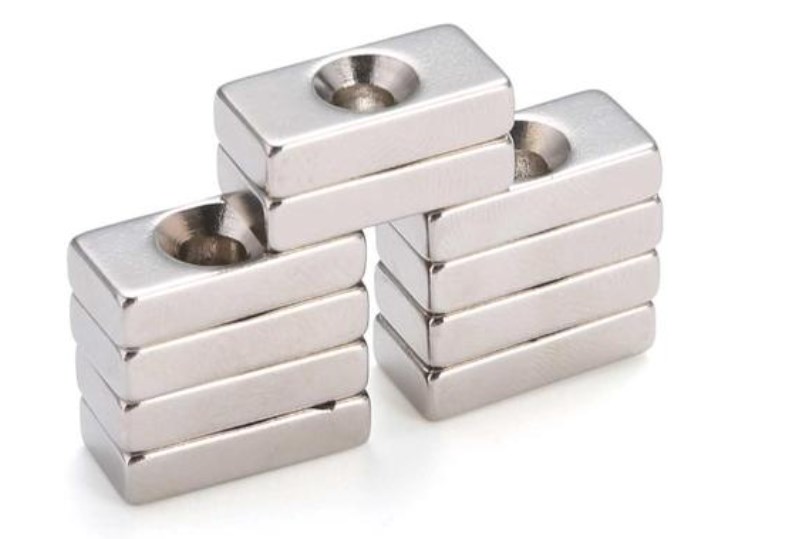From Raw Material to Final Product: Inside the Neodymium Magnet Supply Chain
Last updated on {{lastDate}}
Neodymium magnets, often referred to as rare earth magnets, have become an indispensable component in many modern technologies, from electric vehicles and wind turbines to medical devices and consumer electronics. These
powerful magnets owe their exceptional magnetic properties to the rare earth element neodymium, which is a critical component in their production. In this article, we'll take a deep dive into the neodymium magnet supply chain to understand how these remarkable magnets are created, from the extraction of raw materials to the finished product.

1. Raw Material Extraction
The neodymium magnet supply chain begins with the extraction of raw materials. Neodymium is primarily sourced from two minerals: bastnäsite and monazite. These minerals are typically found in deposits located in countries like the United States, Australia, and Brazil. The mining process can be complex and environmentally challenging, given the need to separate rare earth elements from other elements in the ore.
2. Refining and Separation
Once the raw materials are extracted, they undergo a refining process to separate neodymium from other rare earth elements and impurities. This step is crucial because the purity of neodymium significantly impacts the quality and performance of the magnets. Advanced separation techniques, such as solvent extraction and ion exchange, are employed to achieve the desired neodymium purity levels.
3. Alloy Production
After neodymium is separated, it is combined with other elements, such as iron and boron, to create the neodymium magnet alloy. The specific composition of this alloy is carefully controlled to produce magnets with varying magnetic properties, tailored for specific applications. The alloy is typically produced through techniques like melting, powder metallurgy, or strip casting.
4. Magnet Manufacturing
Once the neodymium magnet alloy is prepared, it's time for magnet manufacturing. This involves several key steps:
- Powder Production: The alloy is ground into a fine powder to enhance its magnetic properties.
- Pressing: The powdered alloy is pressed into the desired shape and size using hydraulic presses or other suitable equipment.
- Sintering: The pressed components are heated to high temperatures in a controlled atmosphere to consolidate the particles and enhance magnetic alignment.
- Machining and Coating: After sintering, the magnets may undergo additional machining to achieve precise dimensions. They are often coated with materials like nickel to protect against corrosion.
5. Quality Control
Quality control is a critical aspect of the neodymium magnet supply chain. Magnets are subjected to rigorous testing to ensure they meet the specified magnetic properties and quality standards. Common tests include measurements of magnetic strength, coercivity, and magnetic field uniformity.
6. Distribution and End-Use
Once the neodymium magnets pass quality control, they are distributed to manufacturers across various industries. These magnets find applications in a wide range of products, from speakers and headphones to MRI machines and aerospace components.
7. Recycling and Sustainability
The neodymium magnet supply chain is not complete without considering sustainability and recycling. Given the growing demand for rare earth elements and the environmental impact of mining, there is a growing focus on recycling neodymium magnets from end-of-life products. This helps reduce the reliance on primary raw material sources and minimizes environmental impact.
In conclusion, the neodymium magnet supply chain is a complex and intricate process that transforms raw materials into essential components of modern technology. From the extraction of rare earth elements to the manufacturing of
high-performance magnets, each step requires precision and expertise to deliver magnets that power innovation across industries. As the demand for neodymium magnets continues to rise, the supply chain's sustainability and responsible sourcing will play an increasingly important role in shaping the industry's future.
About Stanford Magnets
Stanford Magnets has been dedicated to research, development, and sales of licensed rare-earth permanent magnets, including neodymium magnets and SmCo magnets, as well as ceramic magnets, flexible magnets, and magnetic assemblies since the 1990s.
About the author
Cathy Marchio
Cathy Marchio is an expert at Stanford Magnets, where she shares her deep knowledge of magnets like Neodymium and Samarium Cobalt. With a background in materials science, Cathy writes articles and guides that make complex topics easier to understand. She helps people learn about magnets and their uses in different industries, making her a key part of the company's success.
Reviews
{{viewsNumber}}
Thought On
"{{blogTitle}}"
LEVE A REPLY
(Cancle reply)
Your email address will not be published. Required fields are marked
*
{{item.children[0].name}}
{{item.children[0].created_at}}
{{item.children[0].content}}
More Replies
LEAVE A REPLY
Your email address will not be published. Required fields are
marked*















